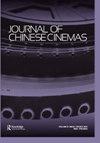An alternative cinema of poverty: Understanding the Taiwanese-language film industry
IF 0.4
3区 艺术学
0 FILM, RADIO, TELEVISION
引用次数: 0
Abstract
Abstract The term taiyupian refers to over one thousand low-budget, Taiwanese-language films made between the mid-1950s and early 1970s. How should we understand this industry? It was neglected and forgotten for many years. By the time scholars became interested in the 1990s in revisiting taiyupian as part of the ‘sadness’ of the island’s martial law era, only 178 complete films survived. More recently, they have been revalorized and promoted as cult movies. In response to the limitations of those frameworks, this essay proposes approaching taiyupian as an alternative ‘cinema of poverty.’ Here, cinema of poverty is not a derogatory remark. Nor is it praise for high modernist purism, along the lines proposed by Jerzy Grotowski in his concept of a theatre of poverty. Rather, it is an analytical term, referring to the adoption of ingenious methods to realize a Hollywood-style cinema industry and culture on a low budget. In other words, this alternative cinema of poverty was also a cinema of aspiration. The essay asks if this practice can be considered as an exuberantly commercial practice of what Lu Xun in the 1930s called ‘grabbism’ (nalai zhuyi), appropriating anything that works from other cultural forms and overseas to create a locally distinctive cosmopolitanism of the poor. Furthermore, it argues that the idea of the taiyupian industry as an alternative cinema of poverty places it in a lineage of similarly neglected popular and commercial film industries that emulated Hollywood on a budget here.另一种贫穷的电影:了解台湾语电影产业
“台剧”一词指的是上世纪50年代中期至70年代初制作的一千多部低成本台语电影。我们应该如何理解这个行业?它被忽视和遗忘了很多年。到20世纪90年代,学者们开始有兴趣将太极片作为台湾戒严时期“悲伤”的一部分重新审视时,只有178部完整的电影幸存下来。最近,它们被重新审视,并被宣传为邪典电影。为了回应这些框架的局限性,本文建议将太极片视为另一种“贫穷电影”。在这里,贫穷电影并不是一个贬义词。它也不是对高度现代主义纯粹主义的赞美,就像耶日·格罗托夫斯基(Jerzy Grotowski)在他的贫困剧院概念中提出的那样。相反,它是一个分析术语,指的是采用巧妙的方法,以低成本实现好莱坞式的电影产业和文化。换句话说,这种贫穷的另类电影也是一种渴望的电影。这篇文章问,这种做法是否可以被视为鲁迅在20世纪30年代所说的“掠夺主义”(nalai zhuyi)的一种繁荣的商业实践,即挪用来自其他文化形式和海外的任何作品,以创造一种当地独特的穷人世界主义。此外,它还认为,将太极片产业视为另一种贫穷电影的想法,将其置于同样被忽视的流行和商业电影产业的谱系中,这些产业在预算上模仿了好莱坞。
本文章由计算机程序翻译,如有差异,请以英文原文为准。
求助全文
约1分钟内获得全文
求助全文

 求助内容:
求助内容: 应助结果提醒方式:
应助结果提醒方式:


